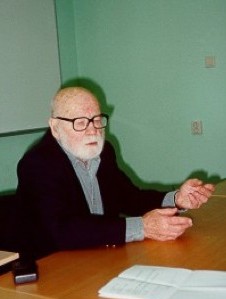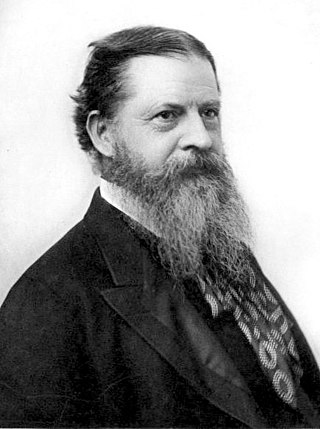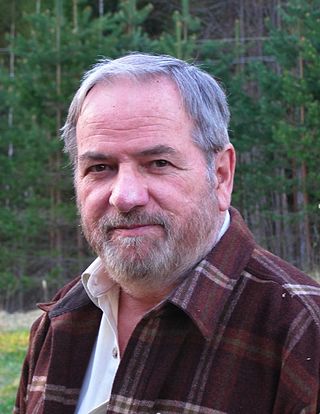Related Research Articles
Semiotics is the systematic study of sign processes (semiosis) and meaning-making. Semiosis is any activity, conduct, or process that involves signs, where a sign is defined as anything that communicates something, usually called a meaning, to the sign's interpreter. The meaning can be intentional, such as a word uttered with a specific meaning; or unintentional, such as a symptom being a sign of a particular medical condition. Signs can also communicate feelings and may communicate internally or through any of the senses: visual, auditory, tactile, olfactory, or gustatory (taste). Contemporary semiotics is a branch of science that studies meaning-making and various types of knowledge.

Juri Lotman was a prominent Russian-Estonian literary scholar, semiotician, and historian of Russian culture, who worked at the University of Tartu. He was elected a member of the British Academy (1977), Norwegian Academy of Science and Letters (1987), Royal Swedish Academy of Sciences (1989) and Estonian Academy of Sciences (1990). He was a founder of the Tartu–Moscow Semiotic School. The number of his printed works exceeds 800 titles. His archive which includes his correspondence with a number of Russian and Western intellectuals, is immense.
Biosemiotics is a field of semiotics and biology that studies the prelinguistic meaning-making, biological interpretation processes, production of signs and codes and communication processes in the biological realm.
Zoosemiotics is the semiotic study of the use of signs among animals, more precisely the study of semiosis among animals, i.e. the study of how something comes to function as a sign to some animal. It is the study of animal forms of knowing.

Thomas Albert Sebeok was a Hungarian-born American polymath, semiotician, and linguist. As one of the founders of the biosemiotics field, he studied non-human and cross-species signaling and communication. He is also known for his work in the development of long-time nuclear waste warning messages, in which he worked with the Human Interference Task Force to create methods for keeping the inhabitants of Earth away from buried nuclear waste that will still be hazardous 10,000 or more years in the future.
Marcel Danesi is Professor of Semiotics and Linguistic Anthropology at the University of Toronto. He is known for his work in language, communications and semiotics and is Director of the program in semiotics and communication theory. He has also held positions at Rutgers University (1972), University of Rome "La Sapienza" (1988), the Catholic University of Milan (1990) and the University of Lugano.

This Charles Sanders Peirce bibliography consolidates numerous references to the writings of Charles Sanders Peirce, including letters, manuscripts, publications, and Nachlass. For an extensive chronological list of Peirce's works, see the Chronologische Übersicht on the Schriften (Writings) page for Charles Sanders Peirce.

Burton–Judson Courts (BJ) is a dormitory located on the University of Chicago campus. The neo-Gothic style structure was designed by the Philadelphia architectural firm of Zantzinger, Borie & Medary, and was completed in 1931 at a cost of $1,756,287.

John Deely was an American philosopher and semiotician. He was a professor of philosophy at Saint Vincent College and Seminary in Latrobe, Pennsylvania. Prior to this, he held the Rudman Chair of Graduate Philosophy at the Center for Thomistic Studies, located at the University of St. Thomas (Houston).
Martin Krampen was a leading German semiotician, semiotics Professor in Göttingen.
Phytosemiotics is a branch of biosemiotics that studies the sign processes in plants, or more broadly, the vegetative semiosis. Vegetative semiosis is a type of sign processes that occurs at cellular and tissue level, including cellular recognition, plant perception, plant signal transduction, intercellular communication, immunological processes, etc.
Semiotica is an academic journal covering semiotics. It is the official journal of the International Association for Semiotic Studies.
International Association for Semiotic Studies is the major world organisation of semioticians, established in 1969.
David Savan was an eminent semiotician and Charles Sanders Peirce scholar. His works were focused on epistemological questions and Baruch Spinoza's philosophy of language.

Jesper Hoffmeyer was a professor at the University of Copenhagen Institute of Biology, and a leading figure in the emerging field of biosemiotics. He was the president of the International Society for Biosemiotic Studies (ISBS) from 2005 to 2015, co-editor of the journal Biosemiotics and the Springer Book series in Biosemiotics. He authored the books Biosemiotics: An Examination into the Signs of Life and the Life of Signs and Signs of Meaning in the Universe and edited A Legacy for Living Systems: Gregory Bateson as Precursor to Biosemiotics.

Augusto Ponzio is an Italian semiologist and philosopher.
The following outline is provided as an overview of and topical guide to semiotics:
Irmengard Rauch is a linguist and semiotician.
Semiotics: Yearbook of the Semiotic Society of America is an annual series that publishes a selection of the peer-reviewed papers presented at the society's annual conference. The content and thematic focus of each volume varies based on the program of the annual meeting.

Susan Petrilli is an Italian semiotician, professor of philosophy and theory of languages at the University of Bari, Aldo Moro, Italy, and the seventh Thomas A. Sebeok Fellow of the Semiotic Society of America. She is also International Visiting Research Fellow at the School of Psychology, the University of Adelaide, South Australia.
References
- ↑ Deely, John 2005. Floyd Merrell named sixth Thomas A. Sebeok Fellow of the Semiotic Society of America. Sign Systems Studies 33(2): 477–480.